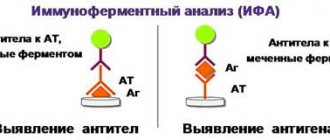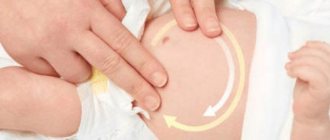Regurgitation is the reflux of a small amount of gastric contents or gastric juice mixed with saliva up the esophagus. Regurgitation often occurs in infants and in the vast majority of cases is a variant of the physiological norm. They do not require therapy except in a few cases, which will be described below.
The younger the child is, the more often he can regurgitate. As the child grows, they gradually disappear until they disappear completely. In the first month, regurgitation occurs in 85% of children; this indicator does not depend on the type of feeding (formula or breast milk) and on the method of administration (bottle or natural feeding). After 3 months, regurgitation occurs much less frequently, and by one year it disappears completely.
At CELT you can consult a pediatrician.
- Initial consultation of a patient under the age of 17 inclusive - 2,500
Make an appointment
Causes and mechanism of regurgitation
The following reasons are identified:
- Filling the stomach with air, which the child can swallow while eating. This is the most common reason, which requires practically no special correction.
- Muscular weakness of the valve between the esophagus and stomach. It develops as the child grows and begins to function normally by the first year of life. Therefore, food can pass from the stomach into the esophagus without hindrance, which is what happens during regurgitation.
- Food allergies (or food intolerances). Most often it manifests itself as skin reactions, but in rare cases, regurgitation may be a symptom.
- Congenital defects of the gastrointestinal tract. The digestive system is quite complex; some disturbances in its structure can lead to digestive problems that begin to appear immediately after birth. Thus, narrowing in the area of the gastrointestinal junction can lead to frequent atypical regurgitation.
Next, we will provide recommendations on how to distinguish pathology from the norm, and when you need to see a doctor. If regurgitation is caused by a disease, then it is reasonable to begin treatment as soon as possible.
Correction and prevention
If a child is diagnosed with regurgitation syndrome, the pediatrician prescribes treatment depending on the intensity of the symptoms. According to ESPGHAN recommendations, complex correction of regurgitation syndrome is carried out in several stages5,6:
| Explanatory work and support for parents | Together with the mother, the doctor analyzes the feeding technique, the amount of milk or formula the baby receives, and gives advice on how often to put the baby to the breast. |
| Postural therapy | This is the correction of the baby's position during and after feeding. You need to feed in a semi-upright position, and after feeding, be sure to hold the baby upright for 20-30 minutes. The head of the bed is also raised by 300. |
| Normalization of diet and diet selection | “Artificial patients” are gradually transferred to anti-reflux mixtures. If the baby is breastfed, dairy products are temporarily excluded from the mother's diet and anti-reflux mixtures with thickeners are added. You cannot overfeed your child. |
Carob gum and starch (rice or potato) are used as thickeners. We compared their features in Table 2.5.
| Gum mixture | Mixture with starch |
|
|
In addition, thickeners based on rice starch can be used without special nipples for feeding. The mixtures are prescribed for a period of 10 to 12 weeks and then discontinued5.
Usually these measures are enough to significantly reduce the frequency and volume of regurgitation. But if non-drug correction does not produce visible results, medications are prescribed that affect the motility of the gastrointestinal tract5.
Top
Regurgitation and vomiting
Regurgitation is in most cases a physiological phenomenon that does not require special treatment or observation. But it may look like vomiting, being a sign of dangerous diseases, in which case consultation with a doctor is necessary. Regurgitation and vomiting have a similar mechanism of occurrence, namely, the release of gastric contents into the oral cavity.
It is important to distinguish between them, since vomiting in newborns is very dangerous and can lead to aspiration of contents into the respiratory tract and respiratory arrest.
There are differences between regurgitation and vomiting:
- Regurgitation most often occurs after eating. Usually this is a single, non-repeating episode. The child regurgitates the food he has just eaten; there are no foreign impurities in it.
- Vomiting usually occurs repeatedly. It happens not related to food intake.
- Regurgitation does not affect the child’s well-being and mood - he is active, does not show signs of anxiety, smiles, and plays.
- Vomiting is accompanied by a deterioration in general health. The child is lethargic or restless.
- Regurgitation usually occurs suddenly, and vomiting is preceded by a decrease in activity and mood.
- Vomiting is rarely the only symptom; other problems with the functioning of the digestive tract or fever are also observed.
Vomiting in a child is a reason to see a doctor!
Grodno Regional Children's Clinical Hospital
Details Published 06 November 2018
Regurgitation syndrome in children of the first year of life
The tendency to spit up is one of the characteristic features of young children. Most often, the mother does not need to worry about this; the baby will grow up, mature, and everything will go away without treatment. However, under various pathological conditions, this tendency intensifies: regurgitation becomes more intense, vomiting appears. So, when is it time to go to the doctor?
Let's start with the fact that regurgitation in infancy itself is a variant of the norm. It is determined by the physiological characteristics of the child.
The main feature is the immaturity of the sphincter between the esophagus and stomach. Normally, after food passes from the esophagus to the stomach, it contracts and prevents stomach contents from returning back to the esophagus. By the time the baby is born, this sphincter is still very weak, so milk or formula flows into the baby’s esophagus and mouth.
The second important feature is that the angle of entry of the esophagus into the stomach in newborns is often obtuse or close to 90°, while in older children and adults it decreases to acute. This also creates conditions for gastric contents to reflux into the esophagus, which leads to regurgitation in newborns.
But not only these features contribute to regurgitation. They can occur in a number of other cases:
- with general immaturity of the body, most often this is a problem of premature babies;
- when overfeeding, if the amount of food eaten exceeds the volume of the stomach. This happens in newborns if the mother has a lot of milk, or in children on IV when the volume of the formula is incorrectly calculated. This leads to the next point: overdistension of the stomach. The sphincter cannot withstand the increased pressure and part of what is eaten is thrown into the esophagus.
- when swallowing air during feeding, which in infants most often occurs due to rapid and greedy sucking, improper attachment of the child to the breast, or incorrect position of the bottle with the mixture. In these cases, an air bubble forms in the stomach, which pushes out a small amount of food eaten.
- with a rapid change in body position after feeding. Regurgitation can occur in a baby if the mother immediately after feeding begins to shake him, swaddle him, bathe him, massage him, etc. This is due to the direct structure of the stomach and esophagus like an “open bottle”: tilted/turned over - spilled the contents.
- with increased pressure in the abdominal cavity. For example, tight swaddling or a diaper that is too tight puts excess external pressure on your baby's tummy, which can lead to spit up. Also, factors contributing to increased intra-abdominal pressure include flatulence (increased gas production in the intestines), intestinal colic and constipation.
Unfortunately, regurgitation in newborns can also be one of the manifestations of certain diseases. Quite often they occur after difficult childbirth (birth trauma, hypoxia), increased intracranial pressure, impaired cerebral circulation, increased neuro-reflex excitability, etc. In these cases, along with regurgitation, the child will experience symptoms indicating damage to the nervous system: increased excitability or lethargy, sleep disturbances, severe trembling of the chin or arms, increased or decreased muscle tone, and others.
Regurgitation is also observed with congenital malformations of the gastrointestinal tract. There are quite a large number of them.
But the most common are pyloric stenosis and pylorospasm. Boys are more prone to this disease and it appears towards the end of the first month of life. The anatomy is such that in the place where the stomach passes into the duodenum, there is a sphincter. It blocks the lumen of the stomach while food is being digested in it. It then opens and the contents of the stomach are evacuated down the gastrointestinal tract. In infants, there are two types of dysfunction of this sphincter - pylorospasm and pyloric stenosis. In the first case, the sphincter muscle contracts like a cramp, and in the second it is greatly thickened and narrows the outlet from the stomach. In these conditions, the contents of the stomach are unable to pass through completely. At first, the volume of milk/formula sucked out is very small, so there are no difficulties with evacuating food. But as the amount of food eaten increases, regurgitation also appears, hence the time to see a doctor - the end of the first month of life. In the future, instead of regurgitation, a fountain of curdled milk with a sour odor may appear. This condition requires urgent hospitalization of the child in a hospital!
In any case, if it seems to you that the frequency of regurgitation has changed, impurities have appeared in what the child burped, or lethargy, it is better to immediately consult a doctor for advice.
If regurgitation occurs infrequently (1-2 times a day), in a small volume (1-3 tablespoons) and the child has a good appetite and good regular bowel movements, he develops normally, gains weight well and has a sufficient number of urinations per day (at least 8–10), then regurgitation can not be given much importance. In such cases, they are most likely associated with the features described above and, most likely, when the child learns to sit, they will pass.
But even with physiological regurgitation, every mother wants to help her baby. There are general recommendations for combating regurgitation:
- do not overfeed the baby. It is better to feed more often, but in a smaller volume. In this case, the daily amount of food should remain the same. When artificial feeding, a pediatrician should calculate the amount of daily and one-time feeding for the baby, taking into account his age and body weight;
- correct attachment of the baby to the breast. When breastfeeding, the baby should latch onto not only the nipple, but also the areola. The angle of the mouth (between the lips) should be greater than 120º.
- When artificial feeding, the correct choice of nipple is of great importance. The modern assortment allows you to choose a bottle and pacifier to suit every taste and budget. But regardless of this, during feeding, the bottle must be tilted so that the nipple is completely filled with the mixture. Otherwise, the baby will swallow air and regurgitation cannot be avoided.
— feeding itself should be carried out in the position of the mother in her arms at an angle of 45–60° from the horizontal plane. To do this, you can use various cushions and pillows.
- after feeding, the baby should be held in an upright position - “column” - for 10-20 minutes so that he can release air (burp), do not swaddle him tightly, dress him in clothes with tight elastic bands that tighten the tummy. It is important that the baby’s head is slightly elevated (at an angle of 30–60° to the horizontal plane). To do this, you can raise the head edge of the crib, or put a bolster under the mattress. You can also put her to sleep not on her back, but on her stomach or right side. In these positions, the possibility of inhaling vomit is reduced to a minimum. It is recommended to change your baby's diaper before feeding so as not to disturb him after eating. It is also better to bathe your baby before feeding and no earlier than 40 minutes after eating.
There are also special medicinal anti-reflux mixtures, but consult a doctor to prescribe them! You should not experiment with the selection yourself. The doctor will examine your baby, talk with you, and determine which formula is best for your baby.
Child behavior
The mechanism of regurgitation is such that components of gastric juice enter the esophagus along with the food eaten. As you know, it has high acidity and irritates the esophageal mucosa. As a result, the child experiences discomfort and can become quite restless. It’s very easy to check whether your baby’s anxiety is related to regurgitation - just lay him on his back. If the problem is regurgitation, then the baby will behave even more restlessly. If not, then the horizontal position will not bring him discomfort.
If regurgitation occurs frequently, it is called regurgitation syndrome. It can lead to complications - chronic irritation of the respiratory tract. As a result of the constant aggressive effect of gastric juice on the mucous membranes of the upper respiratory tract, the latter are susceptible to an inflammatory process. Therefore, it is important to monitor the child’s condition and, if necessary, consult a doctor.
How to determine whether you have attached your baby to the breast correctly?
Smacking sounds when sucking will tell you that the attachment is incorrect and that there is a distance between the breast and the baby’s mouth.
When applied correctly:
- The child’s mouth should be well open, the nose should be pressed to the chest; if the baby does not open his mouth enough, lightly press his chin, helping to open his mouth better; don’t worry about the pinched nose and don’t move your chest further - the baby has something to breathe;
- there is no free space in the corner of the child’s mouth (the baby must create a vacuum with his mouth without letting in excess air);
- the baby grasps not only the nipple, but also the areola (its upper part a little, the lower part as much as possible);
- the mother has no pain, because feeding is not intended by nature as a test, but as the most comfortable process for mother and child; during the first week of feeding, in the first 5 seconds after latching the nipple there may be a slight discomfort, but not pain; pain, bruises and cracks are indicators of improper breastfeeding;
- The baby does not make any extraneous smacking sounds.
By the way, the cause of air capture can also be a strong flow of milk from the mother: in order not to choke in this flow, the child captures air.
Tips for parents
Let's figure out how to avoid possible dangers associated with regurgitation. The main thing that responsible parents need to know is that most often children burp while lying down. This position is dangerous due to aspiration (inhalation) of gastric contents.
Preventing aspiration is simple - just bring the baby upright or turn him on his side or stomach immediately after he burps. Then the baby will be able to push food out of his mouth.
It is worth remembering that it is unacceptable to leave a child with regurgitation syndrome without adult supervision, especially when lying on his back.
Feeding rules
Frequent regurgitation can be prevented by following a few feeding rules.
- After feeding, it is necessary to hold the baby upright. Even if your baby is tired or wants to sleep, you shouldn’t put him to bed right away. It is very comfortable to hold infants on your shoulder. After waiting for the air to burp, the child can be given any position.
- The same should be done before feeding. The thing is that in an upright position the child can release excess air from the stomach. If this is not done before eating, belching is guaranteed.
- There is a certain position recommended for breastfeeding. One of the main goals of correct positioning of a nursing mother and baby is to prevent regurgitation. The semi-vertical position of the baby with the head raised above the level of the body must be maintained during each feeding.
- Feedings should be frequent, but in small portions. Overfeeding is fraught not only with regurgitation, but also with other digestive problems.
- It is important not to feed your baby when he is crying or laughing, otherwise he will swallow excess air.
- If feeding is carried out using a bottle with a nipple, it is necessary to ensure that the hole in the nipple is not too large, and the position of the bottle is such that the nipple is always filled with mixture and not with air.
- You should refrain from active games in the first half hour after feeding.
Following these simple rules will help reduce the frequency of regurgitation.
Assessing the intensity of regurgitation
The severity of regurgitation is usually assessed on a five-point scale proposed by experts from the European Society of Pediatric Gastroenterology, Hepatology and Nutrition (ESPGHAN)3.
Regurgitation intensity scale 1,3:
| Number of points | Description |
| 0 | baby doesn't spit up |
| 1 | up to 5 episodes of regurgitation per day, volume does not exceed 3 ml |
| 2 | more than 5 episodes, volume – more than 3 ml |
| 3 | the child often burps (more than 5 times a day), and half of the milk or formula intended for one feeding is thrown out of the stomach. |
| 4 | a small amount of regurgitation within 30 minutes after each feeding |
| 5 | episodes are repeated in at least half of the feedings, the volume is up to ½ the amount of food |
Top
Danger signs
Responsible parents should be aware of dangerous symptoms that require consultation with a doctor:
- The baby is very restless and often turns around and arches his back when burping or feeding. This symptom may indicate chronic irritation of the esophagus.
- Regurgitation is frequent, abundant, observed after each feeding.
- The child is showing signs of dehydration.
- Regurgitation that first appeared after the first half of the year.
- Prolonged regurgitation without improvement (the same frequency and the same volume of regurgitation in a child 1 year and older).
- Regurgitation is accompanied by an increase in temperature.
- The child does not gain weight or even loses it.
- You cannot independently determine whether your baby is spitting up or vomiting.
There are even more dangerous symptoms, when they appear, you need to call an ambulance:
- The child stopped breathing after burping.
- A bluish tint appears on the lips and face.
- After regurgitation, the child lost consciousness.
- Reflux (stomach contents) that is green or brown can be a sign of intestinal obstruction or stomach bleeding.
Aspiration is extremely dangerous in infants who are unable to clear food from their airways on their own. The only thing parents can do is call an ambulance. It is not recommended to try to help your child on your own.
Treatment at the Rehabilitation Medicine Clinic “Quality of Life”
Despite the fact that regurgitation in a child is considered a physiological phenomenon in most cases, the situation still causes concern for many parents. Only a qualified specialist can fully assess the baby’s condition. The clinic for restorative medicine “Quality of Life” employs experienced osteopathic and physical therapy doctors, as well as psychologists and a pediatric neurologist. You can bring your baby to an appointment from the newborn period, even if his condition does not cause concern. Our doctors will conduct a comprehensive examination and will be able to identify the consequences of the negative influences of the prenatal period, trauma during the birth of the baby, and will provide effective, timely assistance even before these problems cause adverse consequences, for example, in the form of regurgitation.
A preventive examination by clinic specialists is recommended for all children of any age. This will allow you to respond to any pathological changes in the body even before they manifest themselves symptomatically and cause complications. Features of the appointment at the clinic:
– An individual treatment plan is developed only after a comprehensive examination and often includes several specialists at once. This allows you to influence the child’s body from all sides and improve its functioning as a whole.
– Osteopathic techniques do not involve the use of drugs or surgical procedures, which makes them safe even for newborn babies. The clinic uses only techniques with clinically proven effectiveness.
– The clinic’s doctors take all necessary measures to ensure that the appointments are comfortable for the baby and without fear of treatment. If necessary, doctors agree not to undress the baby or place him on the table.
– All clinic staff are qualified doctors who understand that osteopathic care is not a panacea for all diseases and has contraindications. – The work of osteopathic doctors and exercise therapy is not only in treatment, but also in carrying out preventive measures. This helps reduce the risk of health problems in the future, strengthen the body, and promote harmonious and active physical and psychomotor development.
Doctors at the Quality of Life clinic are always ready to see the youngest patients to help restore and maintain their health using safe and effective techniques.
Similar articles:
- Directions
- Specialists
- For visitors
- Articles and videos
ONLY UNTIL January 31st!
20% DISCOUNT ON CLASSES ON THE REDCORD SUSPENSION SYSTEM
Classes are conducted by instructor-methodologist Osipova Maria.
REDCORD allows you to eliminate muscle imbalance by relaxing some muscles and stimulating others. This allows you to resume the motor pattern and return the patient to normal functioning!
Treatment
Treatment is required if respiratory complications occur or if irritation of the esophageal mucosa is suspected. In this case, the specialist will prescribe medications that reduce the acidity of gastric contents. This will not help with regurgitation, but will prevent further trauma to the esophagus. Specific medications are selected individually at an appointment with a pediatrician.
If the cause of regurgitation is an anatomical defect, surgical treatment may be required. Indications for surgery and its scope are specified by the surgeon.
For advice on infant feeding, please contact the specialists at the CELT clinic. Extensive experience, highly qualified clinic doctors and modern equipment are the key to the health and successful development of your children.
Make an appointment through the application or by calling +7 +7 We work every day:
- Monday—Friday: 8.00—20.00
- Saturday: 8.00–18.00
- Sunday is a day off
The nearest metro and MCC stations to the clinic:
- Highway of Enthusiasts or Perovo
- Partisan
- Enthusiast Highway
Driving directions











